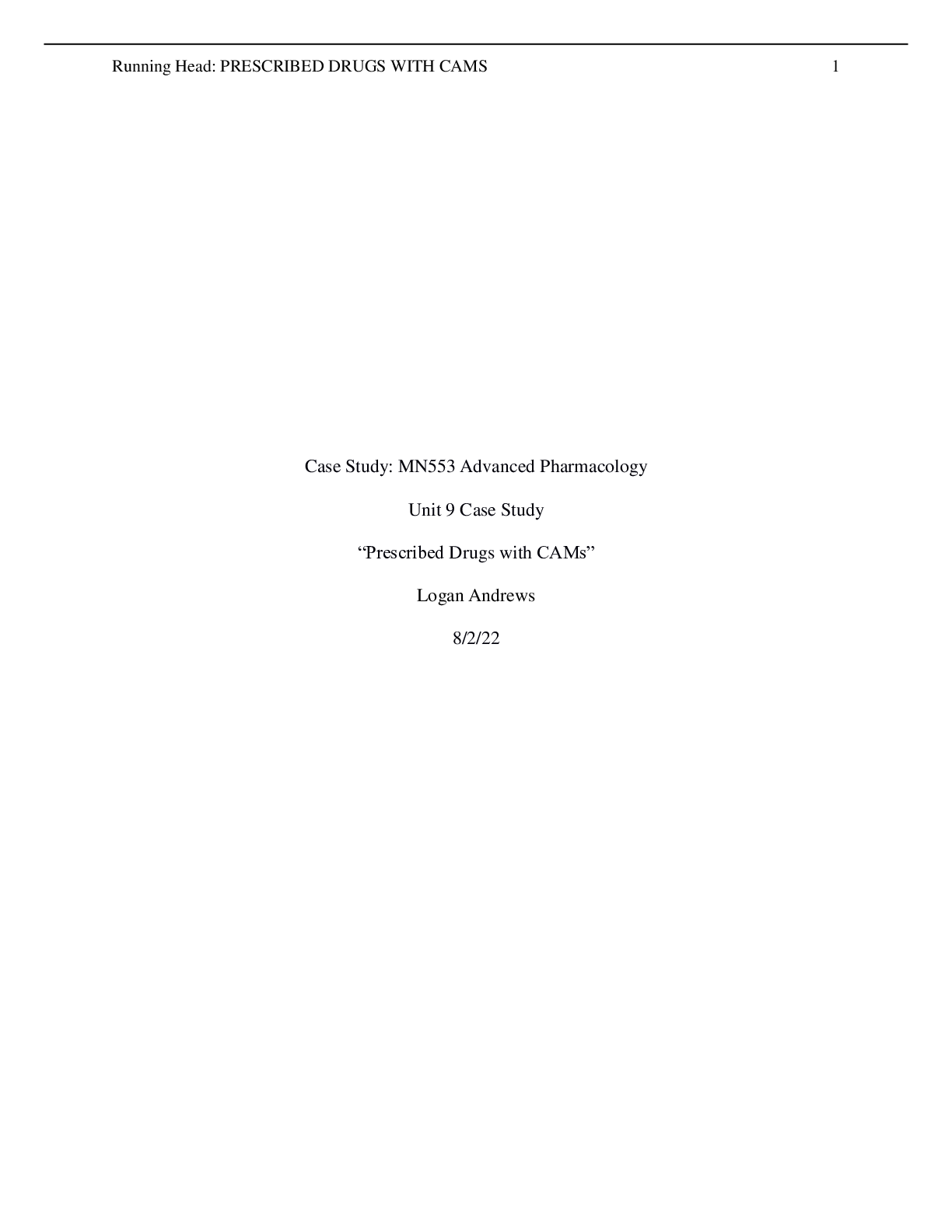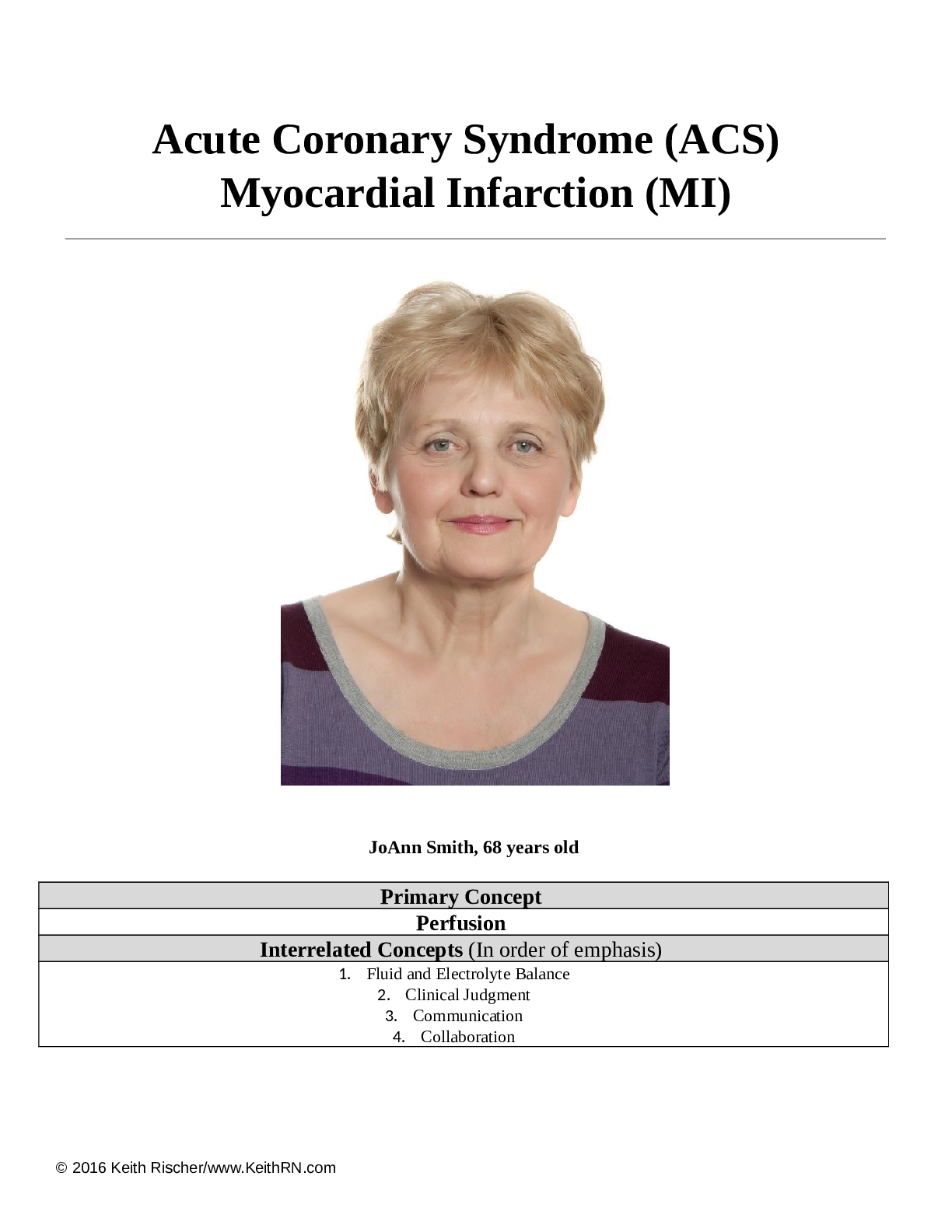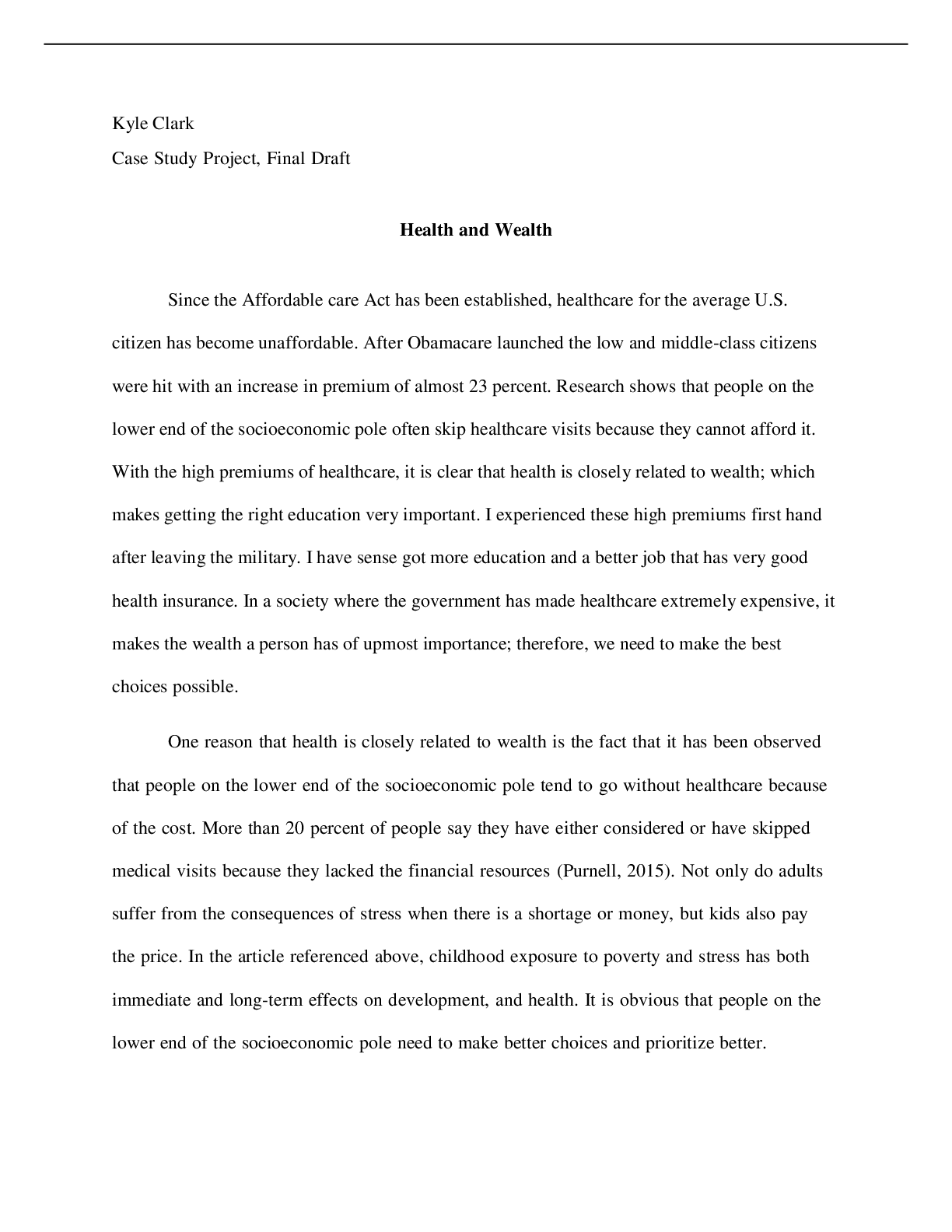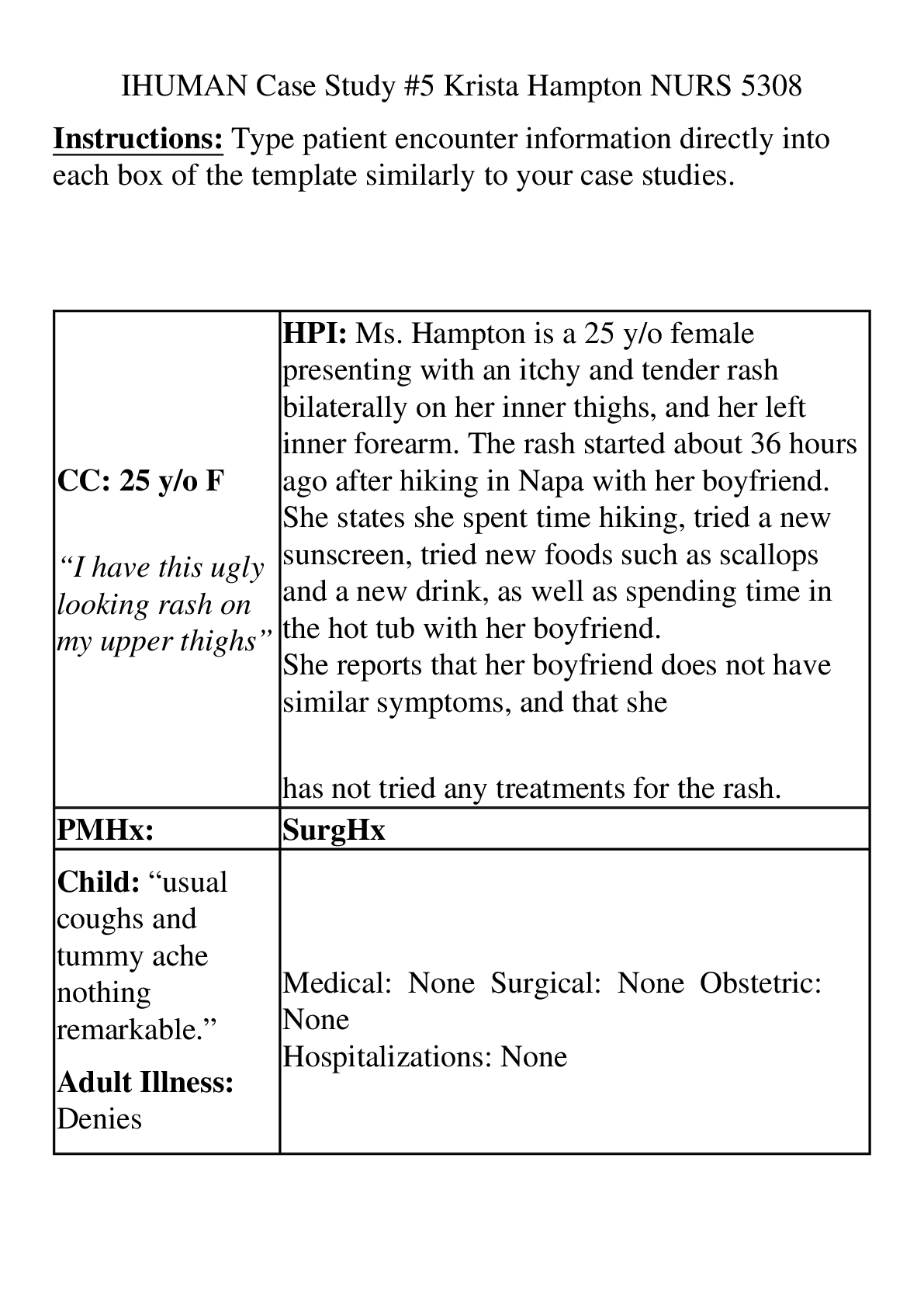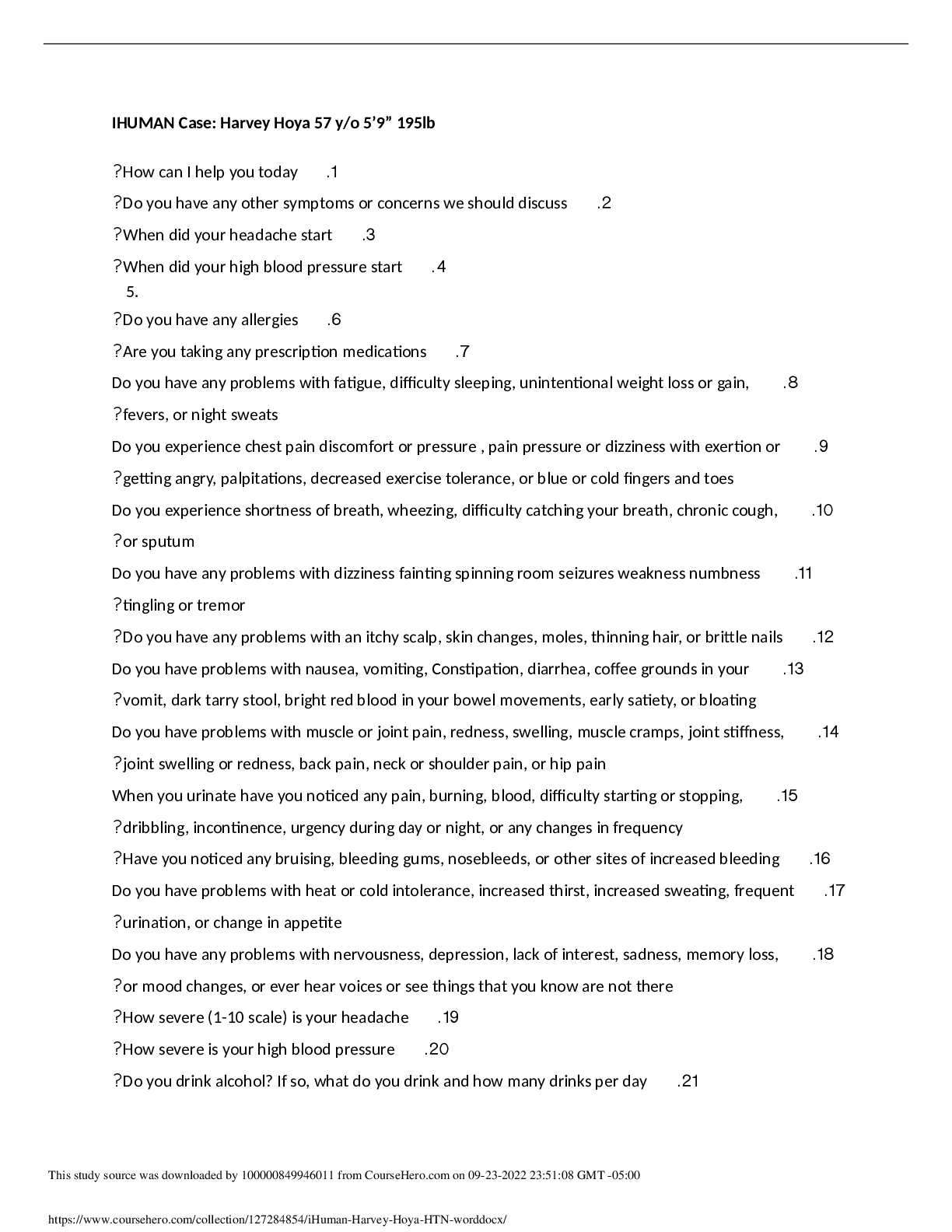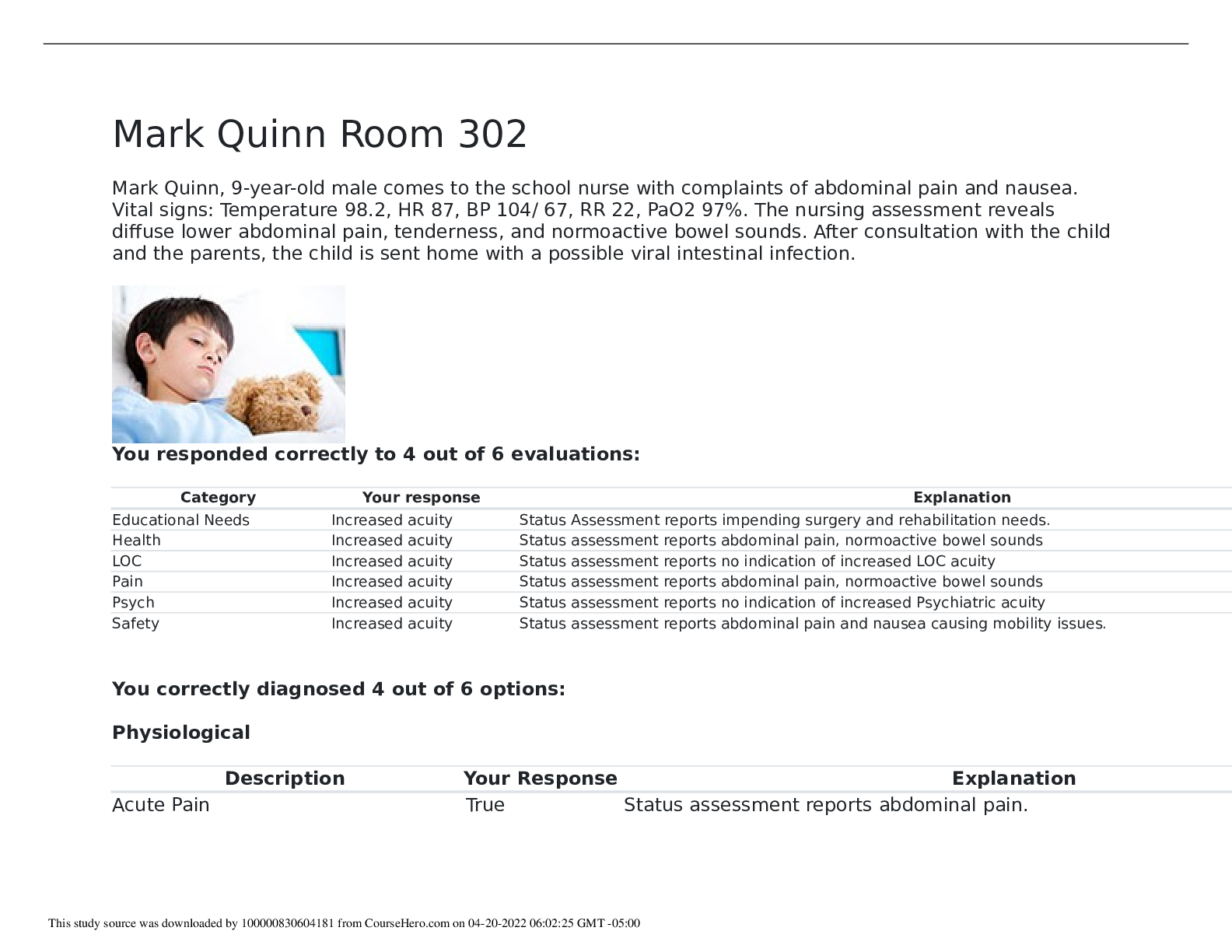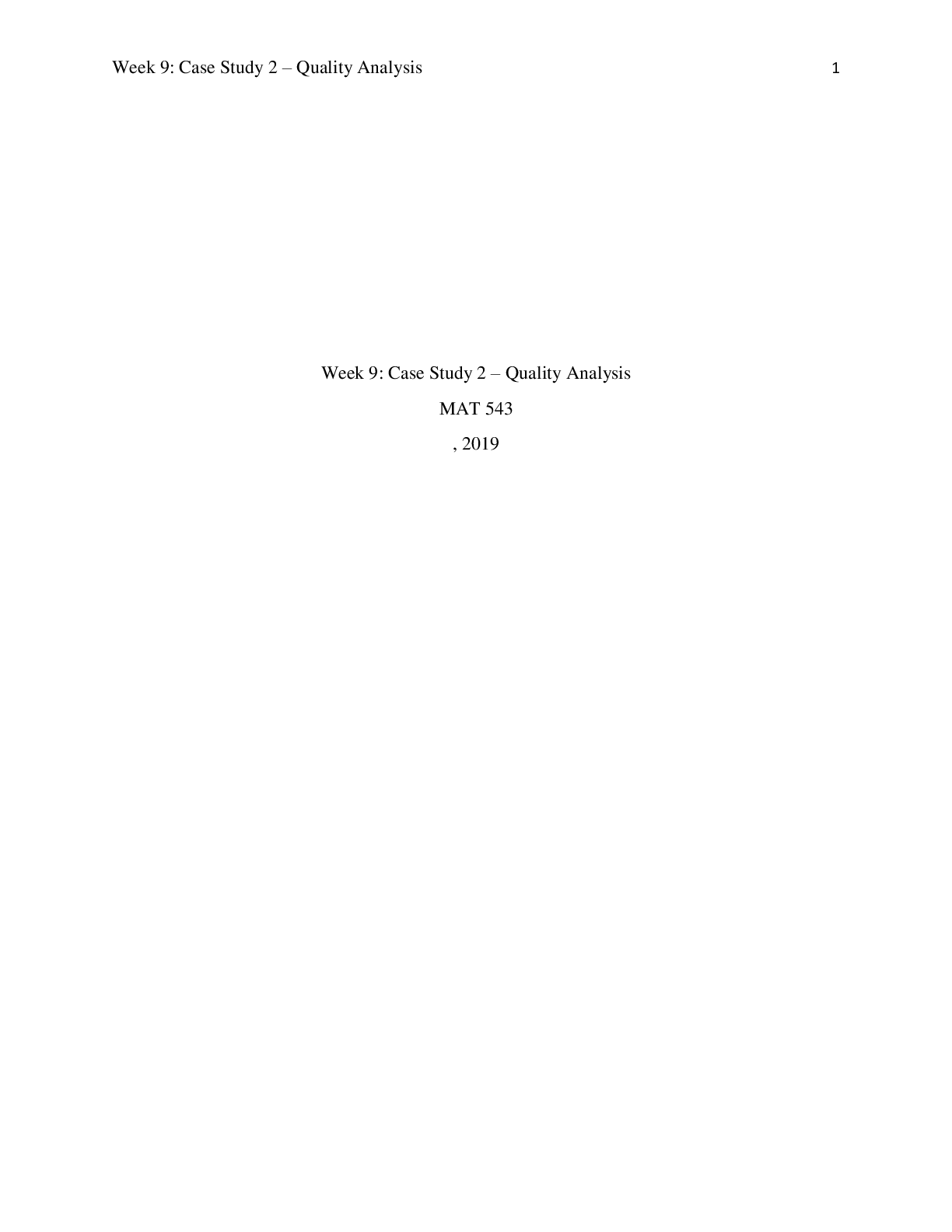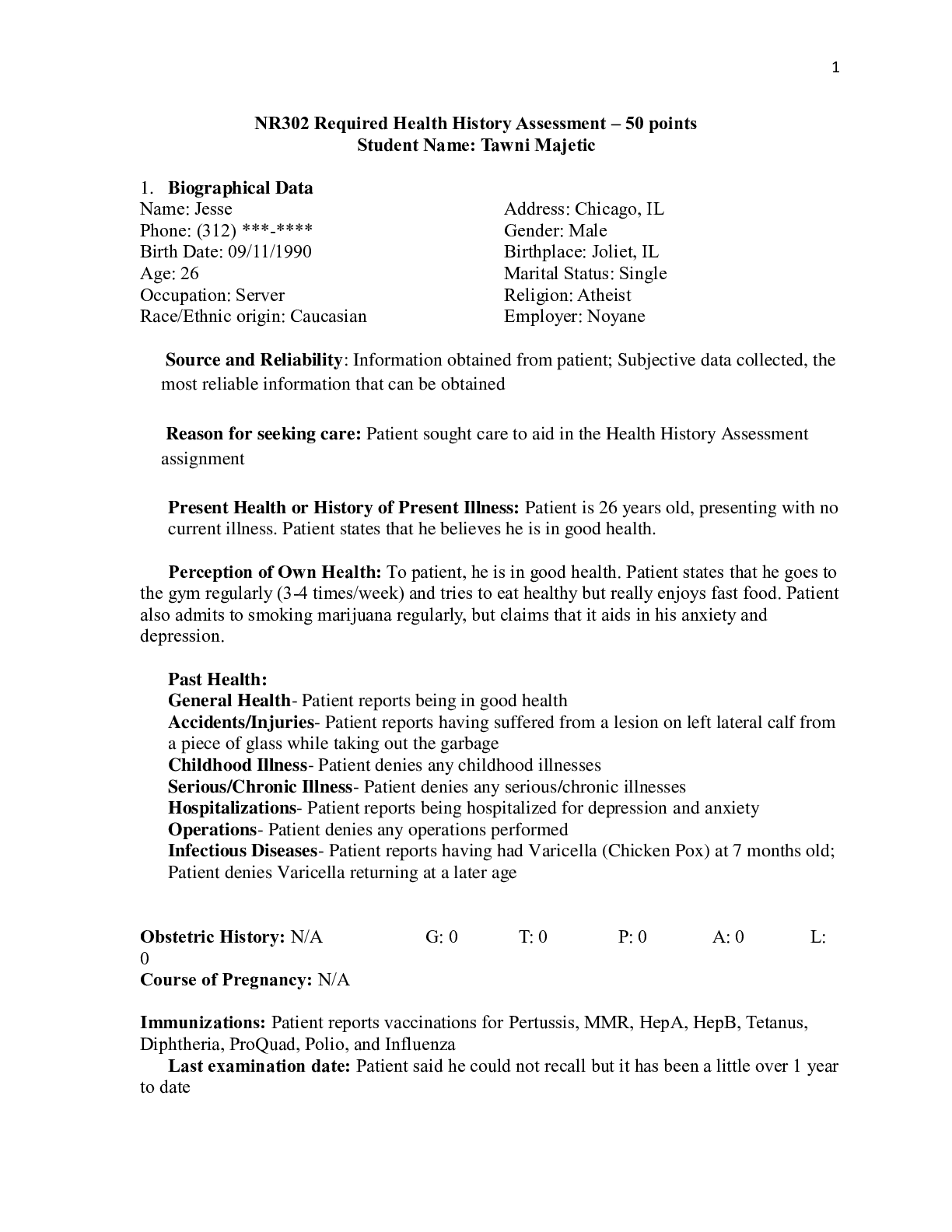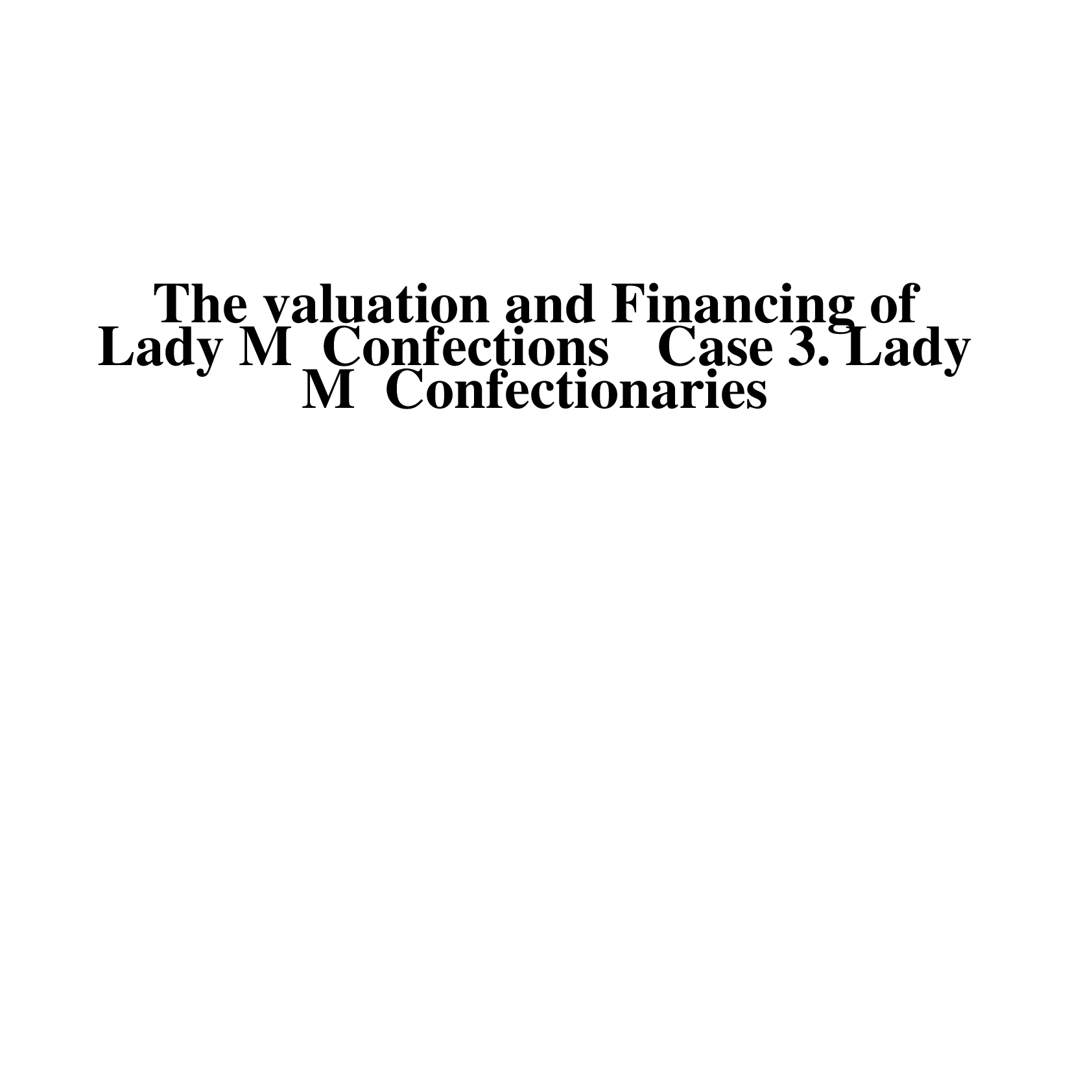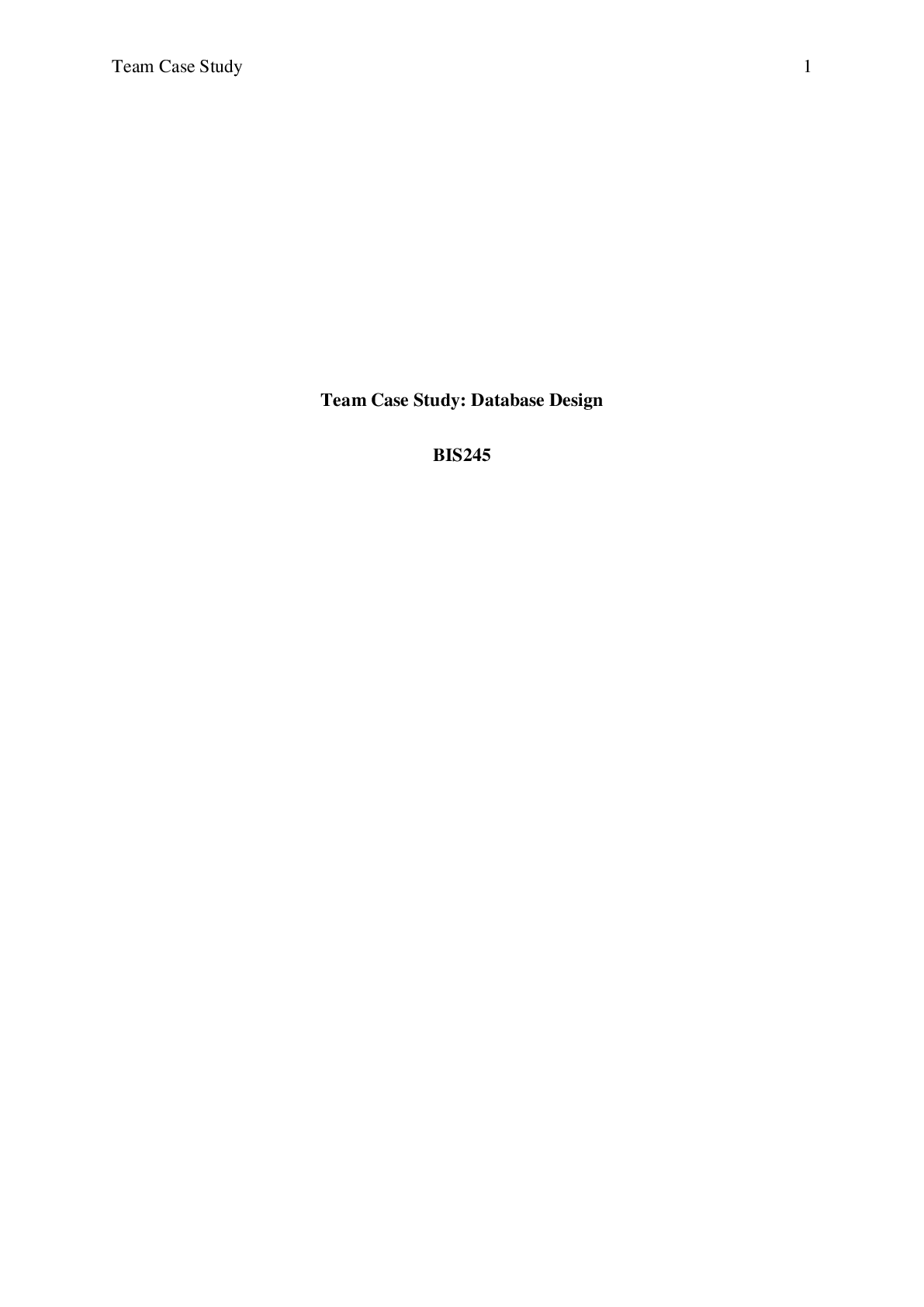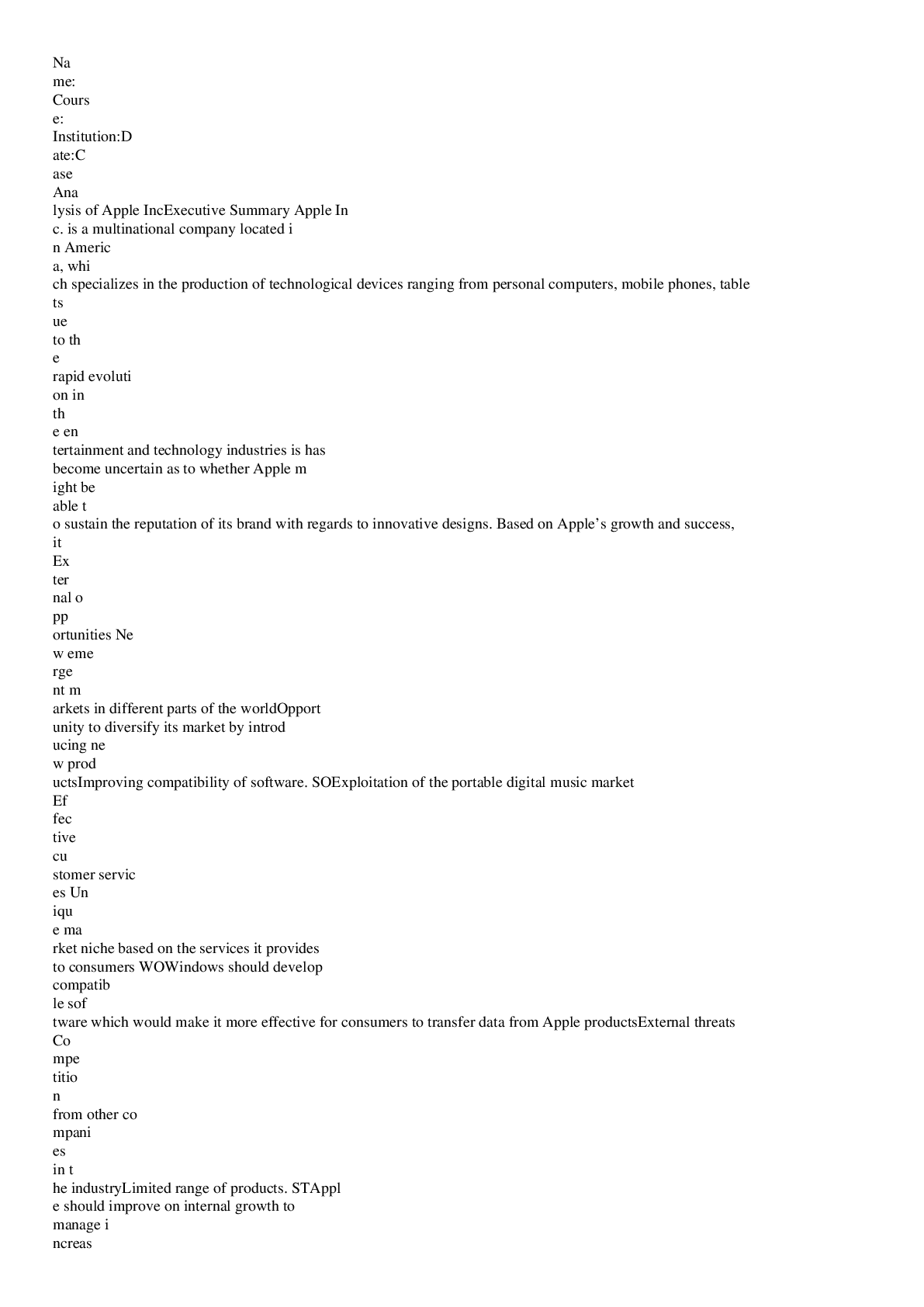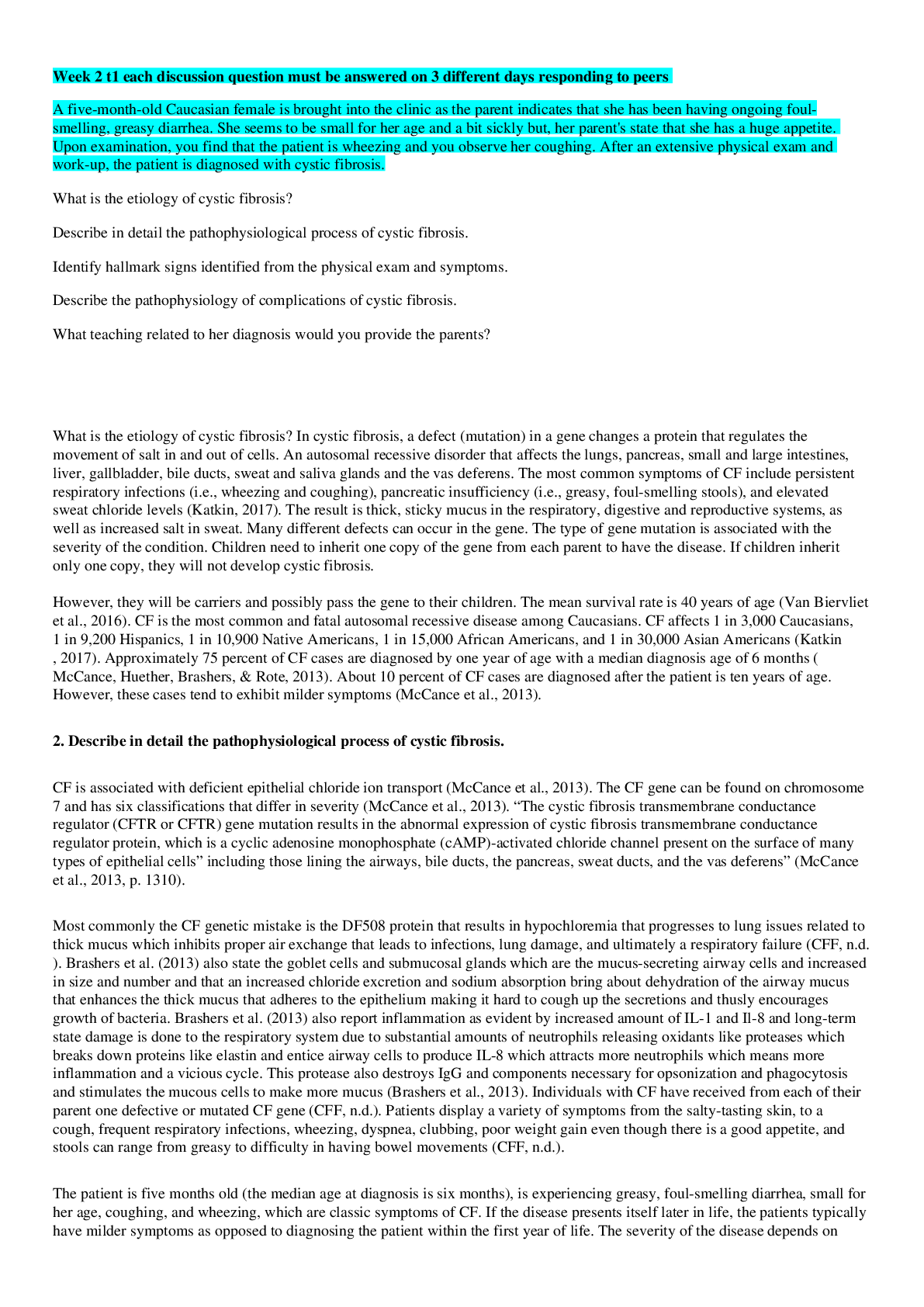*NURSING > CASE STUDY > PEDIATRIC CASE STUDIES (All)
PEDIATRIC CASE STUDIES
Document Content and Description Below
PEDIATRICCASESTUDIES1 1 Growth and Development of the Newborn and Infant Jesus is the first-born son of Roberto and Marie Valez. The parents are very excited about the birth of their new son. They ... have brought Jesus into their nurse practitioner today for his first examination 3 days after his birth. Jesus was 7 lbs 2 oz at birth and 19 in. His Apgar scores were 8 and 9. There were no complications with his mother’s pregnancy or his delivery. Jesus’ parents have noticed that he has lost some weight since coming home. Marie is breastfeeding Jesus and is concerned that she is doing something wrong. They also have several questions about Jesus. (Learning Objectives 1 and 4) A. What can the nurse practitioner tell Marie regarding her concerns about Jesus’ weight loss? ➢ The nurse practitioner should educate the family member regarding newborns: They will lose up to 10% of their birth weight by 3 to 4 days of age; due to fluid shifts, loss of meconium, and limited intake, especially in infants who are breastfed (ATI, RN Nursing Care of Children p.15). Nurse practitioner assures the family members not to worry and continue with breastfeeding method and the infant’s weight regained. B. What questions should the nurse practitioner ask regarding Jesus’ nutrition, and what information can he or she offer to Marie regarding breastfeeding? ➢ Ask the mother if she is breastfeeding her newborn. Ask if she has any experience with pumping and supplemental feedings. Ask them how they feel on supplementing with formula during breastfeeding? Breastmilk is the ideal food for infants for both: Nourish them and Protect them from illness. Breastfeeding is complete nutrition to support optimal development and growth for the first six months of life. Steady introduction of solid foods in the second half of the first year should complement the breast milk diet. Continuous breastfeeding is recommended during the first year and afterward if is mutually desired. C. What anticipatory guidance can the nurse practitioner offer to Roberto and Marie regarding Jesus’ growth and development over the next several weeks?➢ Inform the parent’s that their infant will gain approximately 1.5lbs per month during the first five months of life; Double birth weight at five months. The infant could also grow one inch per month on the first six months of life. Head circumference will be approximately 2cm per month during the first three months. At one month the infant will be able to demonstrates head lag and have a strong grasp reflex. 2. Steve Shell has brought in his 9-month-daughter Emily for her wellness examination and immunizations. Steve is a single father raising his daughter after Emily’s mother was killed in a motor vehicle accident (MVA). Steve is doing a great job of raising Emily by himself, but he still has some concerns about his abilities as a father. He has several questions for the nurse practitioner. The nurse practitioner’s examination of Emily is unremarkable, and she is growing and developing as expected. (Learning Objectives 6 and 7) A. What should the nurse practitioner include when teaching Steve about promoting healthy eating habits and appropriate sleep and rest? ➢ Infant needs extremely soft foods to help her digestion. Infant should also sleep at least 6 hours during the day. ➢ Know how to carry/hold the baby well to avoid making him tired. B. What can the nurse practitioner offer Steve regarding promoting appropriate discipline with Emily? ➢ Ensure the infant eats amount of food advised in a day. ➢ Whether the infant wants to eat or not he should be forced to maintain his health. C. Since Steve is a single parent and sole income earner, he is required to place Emily in daycare while he is at work. Steve is concerned about the effects of day care on Emily’s development. What can the nurse practitioner teach Steve about child care? ➢ Parent should carry his food to the daycare to avoid his child having daycare lunch, to keep to his appropriate diet. ➢ Look for good healthcare and inspect the services make sure it’s where parent wants to use for daycare with for his infant. ➢ Parent should ensure that the child gets personal attention. Chapter 26: Growth and Development of the Toddler 1. Bill and Ted are a domestic couple that has brought in their 30-month-old daughter, Victoria, complaining of a runny nose, cough, and low-grade fever. Bill and Ted adopted Victoria at birth.The biological mother was a teenager who chose to give her child up for adoption and Bill and Ted provided financial support to ensure that she received the appropriate prenatal care. Her pregnancy and delivery were unremarkable. She has had no contact with Victoria or her fathers since the birth. The nurse practitioner determined that the symptoms are attributed to an upper respiratory tract infection (URI) or common cold and recommended that it be treated symptomatically. While in the office, Bill and Ted have some questions regarding Victoria’s behavior. They explain that she has become more defiant, repeatedly responding to their questions or commands with “no” or temper tantrums. Neither Bill nor Ted has been a parent before adopting Victoria and they are concerned that they are to blame for her behavior. (Learning Objectives 1, 5, and 12) A. What can the nurse teach Bill and Ted about the psychosocial or cognitive development of a toddler that would help them understand Victoria’s behavior? ➢ Your toddler is undergoing lots of feelings, also learning about other individual’s moods. ➢ Anger tantrums are usual at this stage because kids frequently don’t know how to put words to feelings such as: ❖ Frustration ❖ Anger ❖ Awkwardness ❖ Guilt ❖ Shame. ➢ Occasionally you my feel: ❖ Angry ❖ Upset. ➢ However, if you feel overcome, place your child in a safe habitation. For instance, ask somebody else to hold him for a while. You have to make a certain time to till that you feel calmer. Parents could similarly try going to a different room to breathe deeply or calling a family member or friend to dialog things over. B. What can the nurse teach Bill and Ted regarding promoting appropriate discipline for Victoria? ➢ Toddler can have a anger tantrum in a public place at times. ➢ Remove the child when having behavior problems like anger tantrum. ➢ Hold your child softly until the toddler clam down from tantrum. ➢ Provide instruction or encouragement followed by: ❖ Example ❖ Observation ➢ Both mom and dad need to be consistent in instruction or encouragement good behavior.➢ Once you say "no hitting" the first time your kid slaps another child on the play area, you also must say "no hitting" the second, third. ➢ Whenever dealing with toddlers, parents should try to use a word like please and thank you every time you can. C. What is “temperament” and how would it influence Victoria’s behavior? ➢ Even though temperament doesn’t outline or predict behavior comprehend a child’s temperament may aid the providers and parents better comprehend on how young children react and relate to the biosphere near them. ➢ Temperament defines the way the child approaches and responds to the biosphere. ➢ It is the child’s individual style have a temperament effects the behavior conducts and the manner she interacts with others. ➢ Information concerning temperament may similarly guide parents and caregivers: ❖ Recognize children’s strengths ❖ Supports then on how the feel, by holding and talking to them ❖ Require succeeding in their relations and environments ➢ Characters address an baby’s level of activity: ❖ Baby’s flexibility to daily routines ❖ Baby’s reacts to new circumstances ❖ Baby’s temper ❖ Baby’s sensitivity to what’s going on near her ❖ Swiftly she adapts to changes ❖ Distractible and determined the infant may be when engaging in an activity ❖ Scholars normally classify children into three temperament types: ✓ Easy or flexible children ✓ Like be happy ✓ Regular sleeping patters ✓ Eating conducts ✓ Flexible ✓ Calm and not easily saddened. ❖ Active or feisty children ➢ Scientists have defined young children’s temperament through depicting numerous diverse traits. ➢ These children can be fussy, uneven in feeding and sleeping behaviors ➢ Fearful of new persons and circumstances ➢ Easily upset by sound and stimulation and strong in their responses. ➢ Slow to warm ➢ These children may be less lively or incline to be fussy➢ Withdraw or respond negatively to new circumstances: ❖ Overtime they develop more positive repetitive exposure to new individual object or condition. ✓ Reference: 3_years.html/context/564 https://www.healthyfamiliesbc.ca/home/articles/promotingpositive-behaviour-your-toddler http://www.webmd.com/parenting/guide/7-secrets-of-toddlerdiscipline#2 http://csefel.vanderbilt.edu/resources/wwb/wwb23.html 2. Tenzin and Dechen have brought in their 24-month-old son, Kim, for his wellness examination and immunizations. Kim is the first child for Tenzin and Dechen, but Dechen is 6 months pregnant with their second child. Tenzin and Dechen are Tibetan refugees who have moved to the United States from India. Kim was born in the United States. Tenzin and Dechen are very focused on Kim’s physical abilities (i.e., motor skills, communication, and sensory skills). They express their desire for Kim to do well in school and be successful in business. (Learning Objectives 3, 4, 7, 11, and 13) A. What could the nurse share with Kim’s parents regarding the normal motor, communication, and sensory development of a 24-month-old? ➢ At this age will have mastered his gross motor skills ❖ May exhibit different food preferences ❖ Communication is rapidly developing ❖ Vision will progress ❖ Sense of smell will mature ❖ Able to understand language ❖ Follow commands. ❖ Feeling ❖ Looking ❖ Touching B. What can the nurse teach Tenzin and Dechen regarding promoting healthy growth and development in Kim? ➢ Setting limits with infant will also help with growth and development in behavior ➢ Parents want to know good age is to start toilet training ➢ Keeping to a daily routine will help her develop conscience➢ Respect and build a foundation of self-esteem ➢ Give the baby love ❖ They should approach Kim in a calm and positive manner while teaching toilet training ❖ Kim will feel more comfortable with a potty chair that sits on the floor ❖ They should use a gentle approach with Kim and give him redirection Kim will benefit by watching older adults use the toilet Chapter 27: Growth and Development of the Preschooler 1. Donnie has brought his 4-year-old son, Isaac, to the pediatric free clinic for a kindergarten physical. Isaac is the older of two children of Donnie and Mary Smith. Donnie is employed as a farrier, but his work does not provide insurance and he has come to a nurse-operated free clinic. Donnie shares that Isaac enjoys spending time with his father when he is working with the horses, but he is concerned that Isaac has an imaginary friend named “Tackle.” On physical examination, Isaac is 39 inches tall and weighs 35 lbs. Donnie is a man of average height (5’9” with a slim build). Donnie is concerned that Isaac may be too small for his age. (Learning Objectives 1) A. What can the nurse communicate to Isaac’s father about his physical growth? ➢ The nurse should educate family member for a typical 4-year-old child: ❖ Average weight is 16.5 kg (36.5 lbs.) ❖ Height 103 cm (40.5 in) ❖ Physical assessment should be able explain to the parent: ✓ If their child is a bit below the national average but still in an expected range. ✓ Assess further into the nutritional intake of Isaac to determine if any deficient occur. B. What can the nurse teach Isaac’s [Show More]
Last updated: 1 year ago
Preview 1 out of 15 pages
Instant download

Buy this document to get the full access instantly
Instant Download Access after purchase
Add to cartInstant download
Reviews( 0 )
Document information
Connected school, study & course
About the document
Uploaded On
Apr 20, 2022
Number of pages
15
Written in
Additional information
This document has been written for:
Uploaded
Apr 20, 2022
Downloads
0
Views
105

